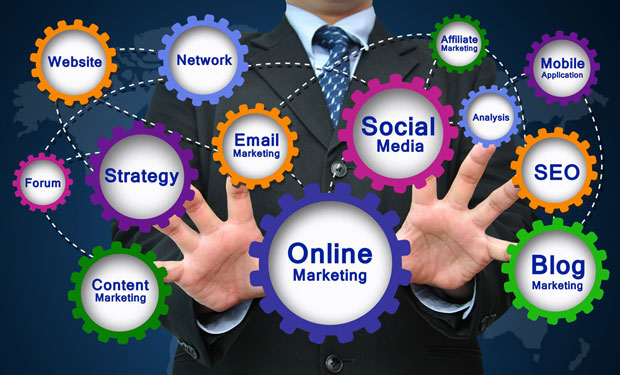Google believes that all the important consumer buying decisions happen in a brief flash of time. Understanding and responding to customer needs in those all-important, tiny moments is key to successful marketing, the company says. Specifically, they are the exact moments when people turn to a device because they want one or more of four things: to know, do, go, or buy.
Google has built a new marketing model around “micro-moments.” Many other companies are following suit and watching the Think With Google newsletter and website very closely.
“You have to make that conversion happen right on the spot once customers have looked at your website or mobile app,” said Bret Bonnet, president of Quality Logo Products.
If you guessed that real-time data and analytics play a big role in finding and identifying these moments, you are right.
“If you’re looking to attract customer attention during micro-moments, the most important thing is that you make your information easy to access and digest,” said Harrison Doan, director of analytics at Saatva Mattress.
“These quick check-ups can easily make or break a sale, so it’s imperative that you optimize your site’s speed,” he told the E-Commerce Times. “If a micro-moment passes before a customer can even load up the information they need, you could lose the sale entirely.”
Companies must have a smart strategy to satiate all of these moments of need to win the cash prize in increased sales.
“The biggest question for us in terms of these instances, Quality Logo’s Bonnet told the E-Commerce Times, is this: How do we harness those micro-moments to help our business?”
That is the question everyone is asking. In an effort to help you find the right answers for your company, here are tips from the experts on each of the four micro-moments defined by Google.
1. I Want to Know
This is the micro-moment when someone wants to learn something. They have a question, and they’re turning to a device to find the answer. The outcome of this activity is more complex for the etailer or retailer than one might expect.
“With the ability to research products online, customers often know more than the sales associate about the product they are interested in. This is why the ‘store associate of the future’ is needed,” said Vicki Cantrell, retail transformation officer at Aptos.
“These are associates who are equipped with tools that can connect the shopper to the full catalog of products throughout the retail enterprise, even if that product is not available in-store at that time,” she told the E-Commerce Times.
“By opening up an ‘endless aisle’ to the customer, brands can ensure that every opportunity for every sale is converted and that the customer leaves the store satisfied,” Cantrell said.
As to satisfying the potential customer’s desire to know, you need a strategy for that as well so that nothing falls short, confuses, or aggravates the customer in that all-important moment.
“We assign ‘how-to,’ ‘what,’ ‘why,’ etc., general questions to the research ‘want-to-know’ phase, and address them with long-form educational content, video, and visuals, and promote them on social media and share with online communities,” said Natasha Kvitka, Digital marketing strategist at Gift Baskets Overseas.
“At this stage, the client is not ready to buy yet, but exposing useful content from a brand starts to create a prospect’s affiliation toward it,” she told the E-Commerce Times.
2. I Want to Do
This is the micro-moment when a person decides to do something immediately or in the future. The “what” can be anything, such as going to a restaurant, taking a vacation, using a product, or something else entirely.
“In the ‘want-to-do’ phase, users seek more technical information about products, services, and solutions. Keywords will include ‘reviews,’ ‘best,’ ‘worst,’ ‘in location,’ etc.,” Kvitka said.
“For this phase, we can provide the details they seek with content like white papers, along with reviews and testimonials from existing clients, to prove a brand’s credibility and expertise, and also target such keywords with paid search pay-per-click campaigns,” she added.
Content may be king, but it has to be useful content.
“We write a ton of how-to content, from how to size your ring to which direction to shave your face!” said Jonathan Poston, e-commerce marketing lead for Wedding Bands For Both and 99 Cent Razor.
3. I Want to Go
This is the micro-moment when a consumer wants to explore events and places while traveling, or near a soon-to-be-reached destination, or simply look for something different to do on home turf. The consumer may know a general category, such as museums or shopping, or possibly be looking for ideas based solely on what is close.
“The want-to-go micro-moments reflect people’s intentions to find a local business where they can do an activity, contract a service, or buy a product. If your business has a local presence, then mobile local ads, Google Business, and Yelp listings are the most effective approach,” advised Jimmy Rodriguez, chief operating officer at 3Dcart.
“If your business is strictly e-commerce, there is still a good opportunity by identifying the most popular destinations related to your industry and targeting these as keywords to promote products that consumers would usually need at those places,” he told the E-Commerce Times.
4. I Want to Buy
This is the most coveted micro-moment, the very second the consumer makes the decision to buy something.
“The customer could be at a retail store and decide to read reviews about the product or compare the price against online stores,” said Rodriguez.
“Assuming your store has a great value proposition, the goal is to present it to the buyer. To achieve this, run shopping ads, campaigns like Google Shopping or Bing Shopping campaigns, and list your products on eBay, Amazon, Walmart, and other marketplaces,” he suggested.
“And most importantly, make sure your website is optimized for mobile, offering a fast-loading site or AMP product pages and digital wallets for quick checkout,” Rodriguez advised. “This can help you win the sale even against local retailers.”
In other words, discoverability is a strategic priority for the ‘I Want to Buy’ micro-moment.
“When consumers are in this mindset, they might have the strongest purchase intent, but that intent doesn’t necessarily mean they know exactly what they want or have a specific product in mind,” said Amir Shub, general manager, Americas at Smartly.io.
“Discoverability, and treating digital ads as an opportunity for consumers to browse and discover multiple products, much like they do in brick-and-mortar stores, is a huge opportunity for brands,” he told the E-Commerce Times.
The most successful companies have a strategy for each micro-moment, but they also look at the moments together as steps in a process.
“My favorite strategy to catch potential customers in the middle of different micro-moments,” offered Gift Baskets’ Kvitka, “is tying SEO, content, social media, and paid search/social efforts to the natural behavior flow of a user from research (want-to-know) through decision (want-to-buy).”






















































Thanks, Pam, your article is very exceptional and unique, it is very rare to read an article like that. You have explained the shopping process perfectly, however, I believe that eCommerce marketing is the container for everything, without marketing the whole process will fade. There are some symptoms coming from the lack of marketing such as low traffic, weak online presence, low conversion rate, and slow loading speed. Hence eCommerce marketing will be always the key to the success of any e-store.